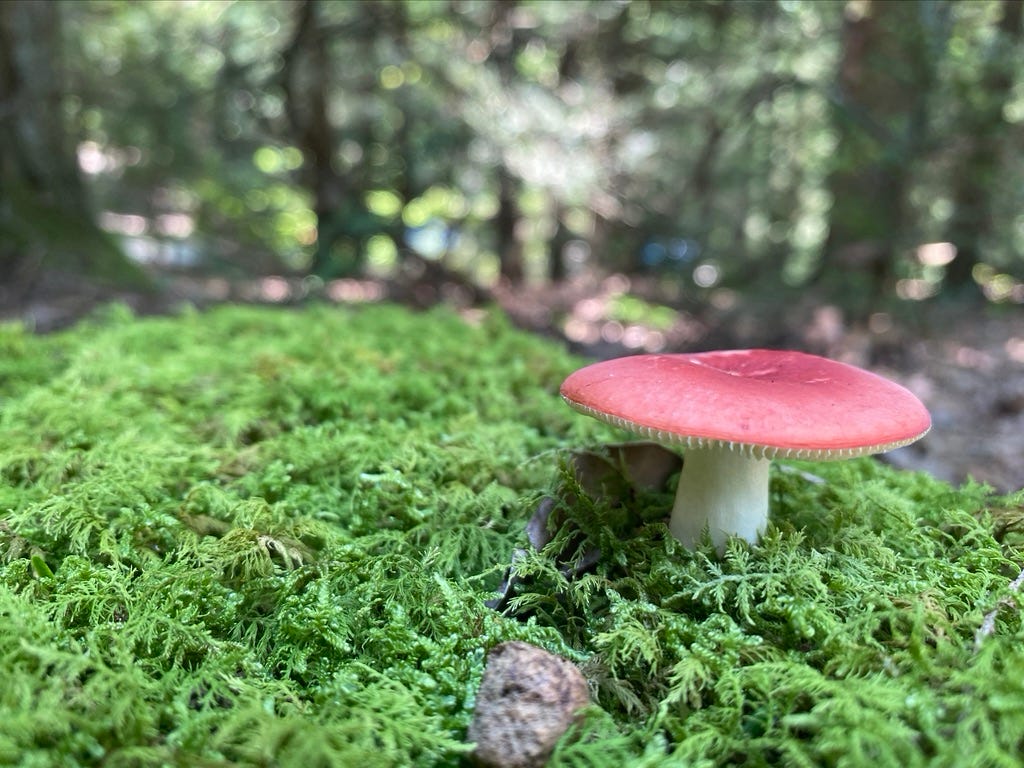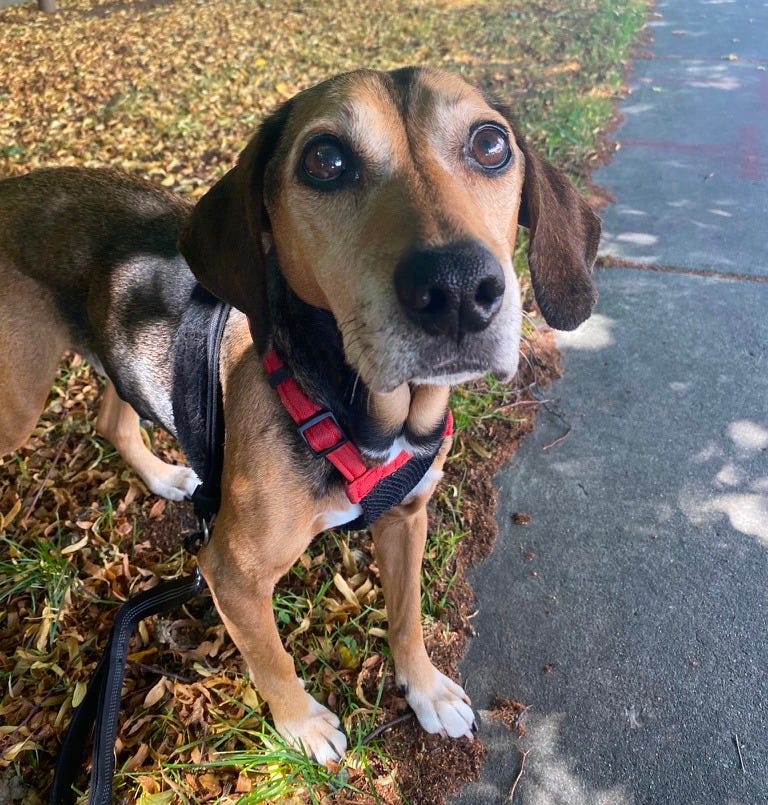We Must Learn To Do Good For The Good Of The Stranger
On the things that condition our care for one another.
When I moved to Detroit I was unprepared for the number of dead dogs I would encounter.
It is a feature of life here downstream, I think, from the Great Recession, a mass clearing out of the city that left in its wake a staggering population of dogs and cats left to fend for themselves on the street, to say nothing of the people. There is a gorgeous park across from my house, across the ocean of a two-lane 25 mph road where most people go 40, and in recent months the lives of cats, dogs, and at least one person have ended at the edge of the grass there. An abscission from the population that through overexposure comes to feel as natural as the seasons.
The other day while driving home from walking two well-loved dogs, clients of my summer job, I passed a highway onramp where lay a collarless street mutt that had been killed by a car. I thought then about what vast distances exist between lives when you travel just a few blocks: I had just left a beautiful home occupied by people who paid me to make sure their dogs were taken care of, walked-watered-fed, plus some Ben & Jerry’s pup cups in the freezer. Shiny black coats, happy dogs built for love. And three minutes later I crossed one of the myriad gray and dismal and sunbaked ramps I see every day—everything in Detroit is a highway, it seems like—and saw the fresh carcass of another dog, all pitbull muscle and scabby thin coat, left to the flies and the elements on a day that cleared 90 degrees.
Of course he might have been other than what he was. The right luck, the right rescue, the right home—there’s no rule that he had to live and die that way save for the rules we’ve made up for ourselves. Or let others make up and impose, I guess.
And even well-loved dogs aren’t immune from our shiny death drive, that imposed set of values that so many have embraced so wholeheartedly. In that neighborhood where I walk the pair I mentioned, probably a third of all the homes have TruGreen1 signs staked out front. As with all other commercially applied pesticide and herbicides, walking dogs through lawns regularly treated with this stuff means subjecting them to a 70% higher risk of malignant lymphoma. Only in America could you dream up a product and give it that name while using it to torch the biosphere and torture the neighborhood animals.
But back to luck for a moment. Scout, for instance. Scout was another of my clients this summer. I say was: “He is dead; it’s best to say it right away, because one can’t help speaking in a different way of the dead than of the living,” wrote Primo Levi. Scout was a hound of some kind or other who was found as a young dog on the side of a country road sporting a gunshot wound to the leg. Another day, another dog’s luck, a little less fight in his brain or in his genes and the story might have ended there. But it didn’t. He died last week at the age of fourteen, having gone on to live in five states. He even met Congresswoman Rashida Tlaib on one of our walks a month or two ago. His Detroit home sported a plush rug and a big comfy couch, on one of which he was always dozing when I showed up. Whatever made a mess of his life in the beginning, he came to be well loved along the way and was allowed to die with dignity when it was his time.
I take great comfort in Scout’s story. Especially at a moment like this. A chorus for our age: He, she, they didn’t have to live and die like that. Every day I look at the news on my phone and this is the base operating thought atop which all others are piled. Gaza or Texas or Congo or Sudan or Iran or along the Rio Grande. He, she, they didn’t have to live and die like that. With the perfectly individuated and atomized and alienated world that has been created and sold to us has come the death not just of undeserving populations but the death of dignity. We have been taught and taught well to see ourselves as holy and just about everyone else as surplus. (One of the great naturalist writers, I forget which, maybe Wallace Stegner, once said of people’s attitude toward nature that we see the world through a “screen of chlorophyll”— plants are so common and so alike, in other words, that our eyes and brains don’t bother to differentiate or even notice them. I can’t help but think maybe we see it through a screen of skin, too, with each of us ourselves starring as the protagonist of reality and everyone else blurring into one great mass that is not worth knowing or noticing.)
Often lately I find myself thinking of something the poet and essayist Anne Boyer wrote back in March of 2020, just as the coronavirus pandemic began in earnest. It’s about that virus, yes, but also about what’s required of all of us in a world that is daily destroyed for so many in ways beyond their control. Emphasis mine:
These are the same types who say the only thing to fear is fear, which of course is not true, because fear educates our care for each other — we fear a sick person might be made sicker, or that a poor person's life might be made even more miserable, and we do whatever we can to protect them because we fear a version of human life in which everyone lives only for themselves. I am not the least bit afraid of this kind of fear, for fear is a vital and necessary part of love. And this fear, which I love, is right now particularly justified, because we have a pernicious virus that travels inside the healthy to sicken and kill the already fragile, and therefore requires that the healthy and strong deepen their moral commitments for the benefit of the sick and weak. We must learn to do good for the good of the stranger now. We now have to live as daily evidence that we believe there is value in the lives of the cancer patient, the elderly person, the disabled one, the ones in unthinkable living conditions, crowded and at risk.
With that relationship between fear and care so apparent I also find myself thinking often of this eponymous poem by the late Molly Brodak.2
I am full of fear, yes. And I don’t know what to do with any of it except to let it condition my love: for others, for dogs, for the plants in my garden. For the future that I refuse to believe isn’t coming. I know too that it’s not enough to let this love simply exist in my mind or be expressed on the page; it must also inform my actions. It’s a lot to remember and a lot to do. I’m working on it.
Thanks, as always, for reading. I’ll talk to you next time.
-Chuck
PS - If you liked what you read here, why not subscribe and get this newsletter delivered to your inbox each week? It’s free and always will be, although there is a voluntary paid subscription option if you’d like to support Tabs Open that way.
PPS - If you feel like supporting some great Detroit organizations working to rescue/foster/adopt stray dogs and cats (plus TNR services for the cats), here are two places you can do that: Rebel Dogs Detroit and Detroit Alley Cats.
I hadn’t thought about this company in a long time before this summer; I mostly remember seeing the trucks in my hometown when I was growing up. I note that they’ve dropped the “ChemLawn” from their branding now that futurism is out (no surprise, the institutions destroying the future would do well not to remind people that they’d ever dreamed of it) and greenwashing is in.
I’ve definitely shared both the poem and the Boyer quote in here before. But honestly it feels good to know that the same things continue to move and haunt me year after year.




![POEM] - 'Molly Brodak' by Molly Brodak (1980-2020) : r/Poetry POEM] - 'Molly Brodak' by Molly Brodak (1980-2020) : r/Poetry](https://substackcdn.com/image/fetch/$s_!-rxa!,w_1456,c_limit,f_auto,q_auto:good,fl_progressive:steep/https%3A%2F%2Fsubstack-post-media.s3.amazonaws.com%2Fpublic%2Fimages%2F18ed369b-a810-4378-ad37-867c602e7630_741x680.jpeg)
beautiful
I read this one at work, tears in my eyes. Thank you for writing and sharing your stories! Hope you are doing well! 💚 Also jealous you met Rashida Tlaib!